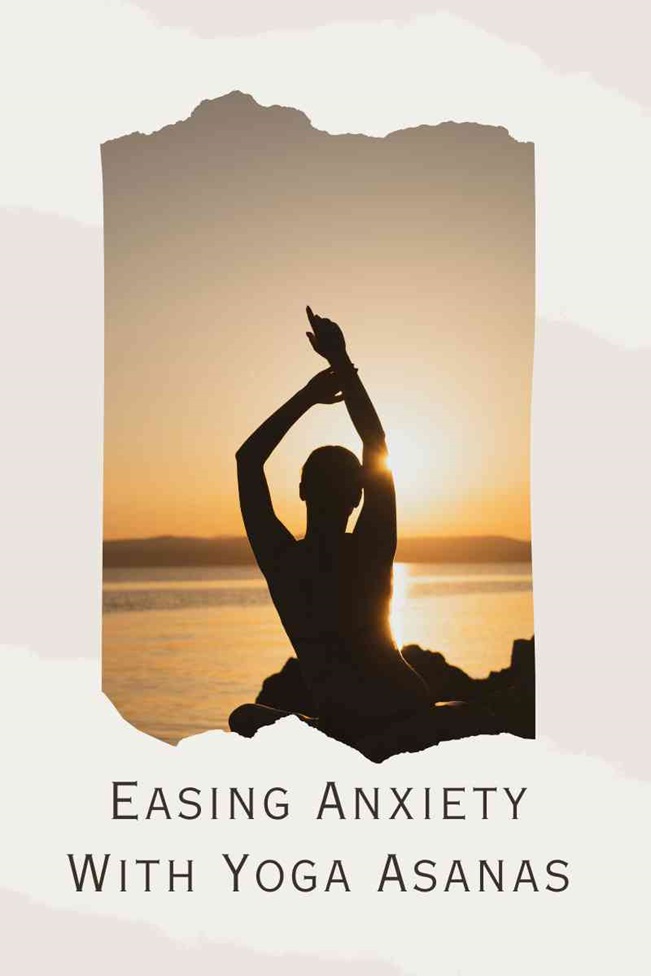In today’s fast-paced world, finding moments of calm and tranquility can be a challenge. The demands of modern life often leave us feeling stressed and anxious. However, there’s a powerful and ancient practice that can help us navigate these feelings and restore a sense of peace – yoga.
Table of Contents

The Power of Yoga in Easing Anxiety
Yoga is more than just a physical exercise; it’s a holistic practice that integrates the body, mind, and spirit. Through a series of postures, known as asanas, combined with mindful breathing and meditation, yoga has the remarkable ability to reduce anxiety and promote emotional well-being.
Cultivating Mindfulness with Yoga
At the heart of yoga’s effectiveness in alleviating anxiety is its emphasis on mindfulness. Mindfulness involves being fully present in the moment and observing your thoughts without judgment. Yoga encourages this state of awareness as you flow through various poses. The focus on the breath during each asana keeps your attention anchored to the present, breaking the cycle of ruminative thoughts that often fuel anxiety.
Nurturing the Mind-Body Connection
Yoga fosters a strong connection between the mind and the body. When you’re experiencing anxiety, your body responds with tension and stress. MIndful Yoga asanas release physical tension, sending signals to the brain that it’s safe to relax. This two-way communication between the body and mind promotes a sense of calm that can be incredibly effective in reducing anxiety symptoms.
Key Yoga Asanas for Finding Calm
If you’re new to yoga, incorporating a few key asanas into your daily routine can make a significant difference in managing anxiety. Let’s explore some poses that are particularly beneficial:
1. Child’s Pose (Balasana)
This gentle resting pose allows you to turn inward and focus on your breath. As you kneel on the floor and lower your torso, your forehead rests on the mat, creating a soothing compression in the front of your body. Child’s Pose gently stretches the back, hips, and thighs while calming the mind.
2. Standing Forward Bend (Uttanasana)
Uttanasana releases tension from the spine, hamstrings, and lower back. As you fold forward, you let go of stress and invite a sense of surrender. The gentle inversion also promotes blood flow to the brain, which can help alleviate anxiety.
3. Corpse Pose (Savasana)
Savasana is the ultimate relaxation pose. By lying flat on your back with arms and legs extended, you allow your body to integrate the benefits of the previous poses. This pose not only reduces physical tension but also encourages mental relaxation and clarity.
4. Bridge Pose (Setu Bandhasana)
Bridge Pose opens the chest and heart, promoting deep inhalations that calm the nervous system. It also engages the legs and buttocks, releasing stored tension. As you lift your hips, you create space for both physical and emotional release.
5. Legs Up the Wall Pose (Viparita Karani)
This restorative inversion pose is particularly effective for reducing anxiety. As you lie on your back with your legs extended up the wall, blood flows away from the feet and legs, relieving tension. Viparita Karani also encourages relaxation by activating the parasympathetic nervous system.
Incorporating Yoga into Your Routine
To experience the full benefits of yoga in easing anxiety, consistency is key. Aim to practice these asanas daily, gradually increasing the duration as you become more comfortable. Remember, yoga is a personal journey, and it’s essential to honor your body’s limitations while gently pushing your boundaries.
Conclusion
In a world that often overwhelms us with stress and anxiety, yoga stands as a beacon of serenity. Its time-honored practices, centered around mindful movement and conscious breathing, have the potential to transform how we navigate the challenges of life. By embracing the power of yoga, you can find a profound sense of calm and peace amidst the chaos.




